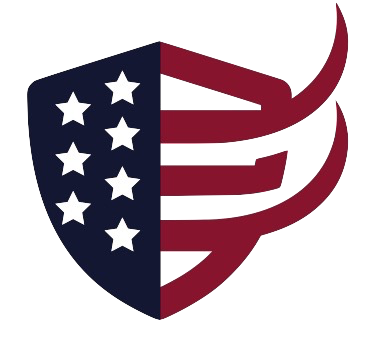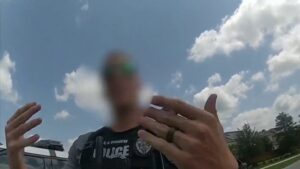What does the thin blue line flag mean?
The thin blue line flag has become a common sight in recent years. The black and white American flag with a single blue line has stirred some controversy, but remains an important symbol for many supporters of law enforcement. Where did this emblem come from and what does it really mean?
A Line of Brave Defenders
The term “thin blue line” originated in the 19th century with the story of the thin red line. During the Crimean War, a British infantry regiment known for its red coats stood resolutely against a Russian attack in the Battle of Balaclava in 1854. This courageous action was described by the press as the thin red line. The color blue was adopted by police officers, whose uniforms were typically blue. The thin blue line came to symbolize law enforcement as the line of brave defenders standing between order and chaos in society.
The Creation of the Thin Blue Line Flag
In 2014, Andrew Jacob designed the thin blue line flag to demonstrate support for law enforcement officers. The flag features a black and white stylized American flag, with a single horizontal blue line in place of one of the white stripes. The black background represents anarchy and chaos, while the stars symbolize justice and order for citizens protected by law enforcement. For many, the thin blue line on the flag also memorializes fallen officers who have died in the line of duty.
Widespread Display of the Emblem
Today, the thin blue line flag can be seen flown alone or alongside the American flag. It appears on t-shirts, hats, decals, face masks, and other items. Police stations, patrol cars, uniforms, and pins often display the thin blue line to show solidarity within the law enforcement community. For civilians, it communicates their support for police officers and the dangerous work they undertake to maintain peace and order in society.
Controversy Around the Thin Blue Line
In recent years, the thin blue line flag has also become controversial. Some view it as a symbol of defiance against reform and accountability for police misconduct. Associating the flag with racism and police brutality, they argue the emblem does not represent all citizens equally. As a result, a few police departments have removed thin blue line imagery from patrol cars and uniforms. Some homeowners associations have banned display of the flag.
Showing Appreciation for Those Who Serve and Protect
Despite some opposition, most supporters of the thin blue line flag assert its meaning is simply showing appreciation for law enforcement officers. The creator of the flag emphasizes it has no association with racism or politics. Citizens displaying the emblem aim to express thanks to those who choose to serve and protect, often putting their lives at risk. Just as other first responder symbols like the Maltese cross and star of life represent valor and sacrifice, the thin blue line flag honors police officers killed or injured on duty.
Conclusion
The thin blue line flag reminds us of the courage required and sacrifice made by those who serve in law enforcement. This emblem originated to represent police as the wall standing between peace and anarchy in society. Displaying the flag shows support for officers who undertake danger every day to protect our communities. While some controversy exists around this imagery, most advocates say the intent is solely to appreciate those who protect and serve on the thin blue line.
FAQs
What does the single blue line on the flag mean?
The single blue line represents law enforcement officers, who serve as a thin line separating order from chaos in society. The blue line refers to the blue color of most police uniforms.
Who can display a thin blue line flag?
Any citizen can choose to display the thin blue line flag, not just law enforcement officers. It’s intended as a symbol of general support and appreciation for police.
Is the thin blue line flag about politics?
The flag does not inherently represent a political view. However, some critics have associated the flag with opposition to reform of policing. Supporters emphasize it is simply intended as a non-political sign of appreciation.
Why do some people dislike the thin blue line flag?
Some individuals view the flag negatively because they associate it with racism, police brutality, and resistance to improving accountability. However, most supporters deny the flag is meant to convey those harmful ideas.
Does the thin blue line flag violate flag codes or disrespect the American flag?
The black and white American flag image with the blue line does not violate any flag codes. The thin blue line flag is usually seen as complementary to the values of the American flag.




